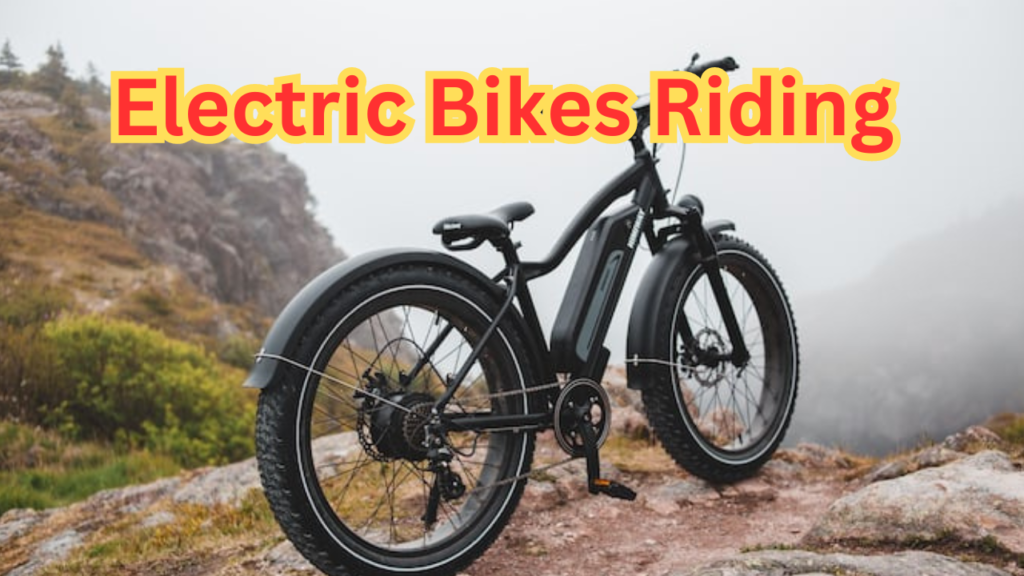Electric Bikes Riding
Electric bikes have revolutionized the cycling world, offering an environmentally friendly and convenient mode of transportation. Learning to electric bikes riding can be an exciting and fulfilling experience especially for those looking for an eco-friendly alternative for commuting or leisure rides. This comprehensive guide will explore the various aspects of learning to Electric Bike Riding, from understanding the basics to mastering riding techniques.Read:Disadvantages of E-Bikes
Table of Contents
Mastering Electric Bike riding Components
Before embarking on your electric bike learning journey, it’s essential to grasp the critical components of these innovative machines. The motor type, power, battery technology, and control mechanisms such as pedal-assist and throttle control significantly influence an e-bike’s performance and efficiency.
Choosing the Right Electric Bike
Selecting the ideal electric bike involves considering several factors, including terrain, intended usage, and budget. Various e-bikes cater to diverse needs, like mountain biking, city commuting, or leisurely rides. Understanding these distinctions aids in making an informed choice.Read:Die besten Damen E-Bikes
Learning to Electric Bike Riding
Safety should be the primary concern when learning to ride an electric bike. Familiarizing oneself with safety precautions and wearing appropriate gear is crucial. Mastering starting and stopping techniques and navigating different terrains is pivotal for a smooth and enjoyable ride.
Table:Learning Electric Bike Riding: A Step-by-Step Guide
| Step | Description | Tips |
| Preparation Boost the battery | * Charge the battery: Make sure your e-bike is fully charged before heading out. * Choose a safe space: Find a flat, open area free from obstacles and traffic. * Wear proper gear: Helmet, comfortable clothing, and closed-toe shoes are essential. | * Check local regulations for e-bike use in your area. * Bring water and snacks for longer rides. |
| Maintenance and Care | * Adjust the seat: The seat should be positioned so your knees are slightly bent when pedaling. * Learn the controls: Locate the throttle, assist level buttons, brakes, and display. * Practice balance: Sit on the bike with your feet flat on the ground and coast back and forth to get comfortable with the weight. | * Ask for help from the bike shop staff if you’re unsure about anything. * Take your time and don’t get discouraged. |
| Starting and Stopping | * Turn on the assist: Choose a low assistance level initially. * Start pedaling: Gently push off with your feet and then twist the throttle (if your bike has one) or increase the assist level to gain speed. * Use the brakes: Practice applying both brakes equally for smooth and controlled stopping. | * Don’t start with too much assistance, especially on hills. * Be aware of your surroundings and signal your intentions before turning or stopping. |
| Riding and Maneuvering | * Shift gears (if applicable): Adjust the gears based on the terrain and your desired pedaling effort. * Maintain balance: Look ahead and focus on a smooth, steady line. * Practice turning: Start with wide turns at low speeds and gradually narrow them down as you become more comfortable. | * Experiment with different assist levels to find what works best for you. * Keep your hands relaxed on the handlebars and avoid death gripping. * Communicate with other road users (cyclists, pedestrians, cars) and follow traffic rules. |
| Advanced Techniques | * Braking downhill: Apply the brakes gently and in sequence (rear brake first, then front brake). * Riding in wet weather: Reduce your speed and be extra cautious of slippery surfaces. * Carrying cargo: Use proper panniers or baskets to distribute weight evenly. | * Take a certified e-bike riding course for in-depth training and safety tips. * Join a local e-bike riding group for camaraderie and support. |
Maintenance and Care
Maintaining an electric bike ensures its longevity and optimal performance. Regular cleaning, battery maintenance, and troubleshooting common issues are essential to preserving the bike’s functionality.Read:Faster Electric Bikes

Boost the battery
Remember that you can ride an analogue bike or an e-bike without using any power at all. However, the real electric bike experience will come from something other than that.
The battery charger and charging cable for your e-bike are included. The cord should be plugged into the charger, the storm, and the wall in that order. If you would like to charge the battery somewhere else, such as your office after your work commute, you can do so while the battery is still attached to the bike. The battery will indicate that it is charging successfully via a light on it.
Advantages
The advantages of learning to ride an electric bike are multifaceted. They offer accessibility for beginners, making cycling an enjoyable experience for individuals of various skill levels. E-bikes contribute positively to the environment, promoting sustainability in transportation.Read:Speed limit on E-Bikes
Conclusion
Learning to ride an electric bike is an accessible and rewarding endeavour. From understanding the components to mastering riding techniques, the journey is filled with excitement and environmental consciousness.
FAQs
Is it challenging for beginners to ride an electric bike?
With proper guidance and practice, beginners can easily ride an electric bike. The assistance provided by the motor eases the learning curve.
How far can electric bikes travel on a single charge?
The range of an electric bike depends on factors such as battery capacity, terrain, and usage. Typically, they can travel 20-50 miles on a single charge.
Are electric bikes legal on roads and bike paths?
Regulations regarding electric bikes vary by location. In most places, they are permitted on roads and designated bike paths, but it’s advisable to check local laws.
Do I need a special license to ride an electric bike?
No special license is required for riding an electric bike in many places. However, age restrictions and speed limits may apply in certain areas.
How often should I maintain my electric bike?
Regular maintenance is essential for optimal performance. Basic upkeep, such as cleaning after rides and checking the battery, should be done periodically.
